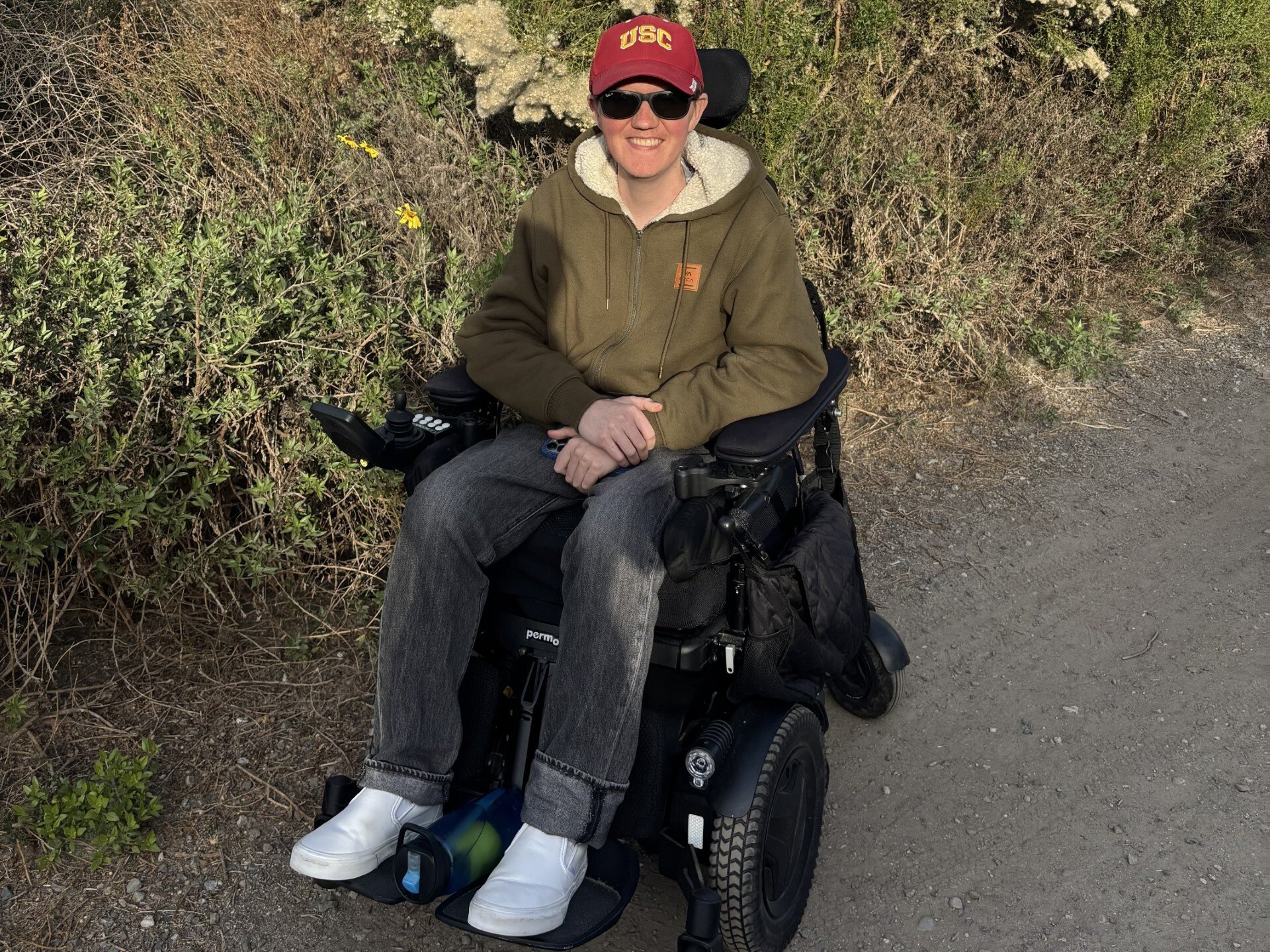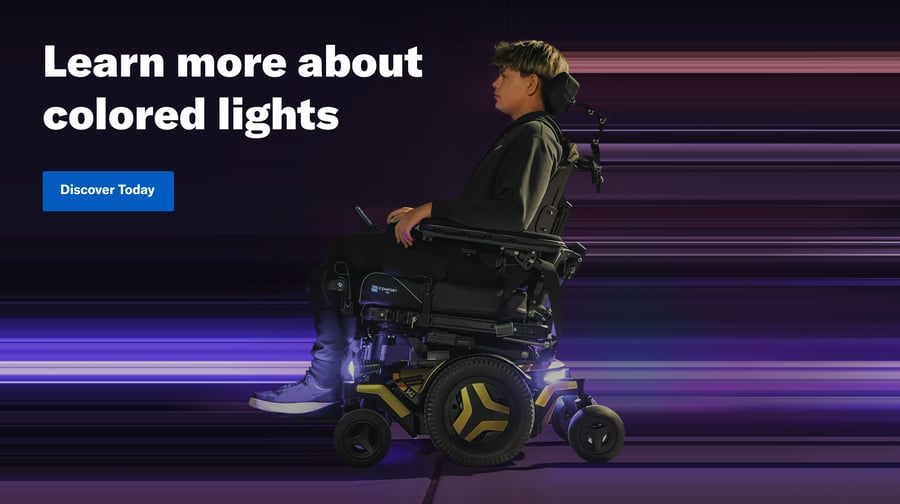Being able to navigate different terrains, have more stability while in stand, and make tighter turns around corners have been helpful for me since I first received my front-wheel drive power wheelchair in 2018 during my junior year at the University of Southern California (USC). This front-wheel drive configuration was dictated by what my daily activity looked like. I hope that my experience can give you more clarity on how you decide whether a front-wheel, mid-wheel, or rear-wheel drive wheelchair is best for you or one of your clients.
Moving from Mid-wheel to Front-wheel
My first electric wheelchair was a demo I bought from a durable medical equipment provider. It was a mid-wheel drive chair. As I was new to power wheelchairs, I didn’t think much of the drive wheel configuration.
It worked for what I needed it to do – getting me from point A to point B on USC’s large campus. This chair was way better than my scooter. I had to arch my back and reach for the handles to drive the scooter. Plus, this power wheelchair was faster so I could leave for class later.
Shortly thereafter, I worked with my physical therapist to get a prescription for a wheelchair that was better suited for my needs and fit specifically for me. Based on my experience during the evaluation with the physical therapist, I decided on a Permobil F5 Corpus VS. While I was still ambulatory at the time of the evaluation, I was no longer able to stand for long periods of time. In addition, I still needed gravity on my bones, muscles, and digestive and circulatory system, so a power wheelchair with a power standing function was the best match for me.

Benefits of My Front-Wheel Drive Chair
One of the first benefits I noticed when driving my new front-wheel drive power wheelchair was that I was able to better navigate the tight spaces of the Victorian-era house I shared with 13 other guys. To get to my room on the first floor, I had to traverse up a large metal ramp, turn left into a narrow hallway, and then make another left into my room. While I may have scraped up the paint on the right side of the hallway, I was just able to make the initial corner to get through my narrow door. There were centimeters to spare, but thanks to the front-wheel drive configuration of my wheelchair I was able to make it work.

Living in LA during that time also made my front-wheel drive chair selection appropriate. If you’ve ever been to LA, chances are you’ve almost tripped over a tree root pushing up the sidewalk. With a front-wheel drive chair the large front tires could pull me over obstacles, like cracks in the road, large bumps on the sidewalk, and small curbs.
Getting Used to Drive Configurations
Driving a front-wheel drive chair takes some time to get used to. I always have to remind myself I need extra room in the back when I am navigating tight quarters or maneuvering through crowds. While it takes corners nicely, a front-wheel drive chair is more challenging to use in cramped quarters.
I have a converted BraunAbility MXV Wheelchair Accessible SUV Ford Explorer. Because it is an SUV and not a minivan there’s not as much space to maneuver. That makes it even harder when driving a front-wheel drive chair, given the rear casters stick out a bit more. With a mid-wheel drive chair, you can turn on a dime, whereas a front-wheel drive chair turns from the front. I’ve made it work with my vehicle, but if someone isn’t as confident in their driving skills or they live in a tighter place, mid-wheel drive might be a better option.

As much as front-wheel drive has been helpful to me, choosing the right drive wheel configuration ultimately depends on the environment (both indoor and outdoor) the person using the power wheelchair will be driving and what their daily activities look like. I highly encourage people to experience driving different power wheelchair configurations during their evaluation process prior to making a final decision, because, in most cases a person will have their wheelchair for at least 4-5 years prior to being eligible to getting another.

Hawken Miller
Content Marketing Specialist
Before joining Permobil as content marketing specialist, Hawken was a content strategist for the nonprofit CureDuchenne, creating blogs, emails, and social media content for the Duchenne muscular dystrophy community. For most of his life before that, he worked as a journalist, writing feature stories for BioNews, and reporting on the video game and esports beat for The Washington Post. Following his passion for writing, Hawken graduated from journalism school at the University of Southern California.

